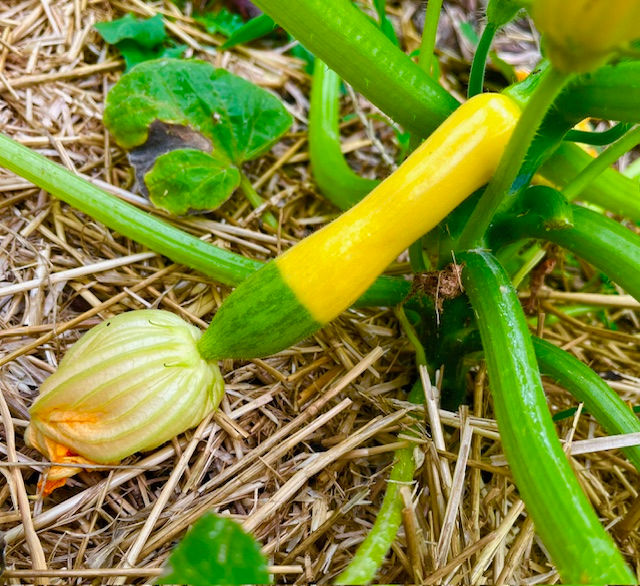Market Garden
A market garden is a small-scale farming operation focused on producing a variety of highquality fruits, vegetables, and herbs for direct distribution, typically through farmers' markets,
community-supported agriculture (CSA), or local restaurants. Market gardens focus on crops that can be harvested continuously or rotated quickly.
Unlike large-scale industrial farms,
market gardens often prioritize sustainability, soil health, and crop diversity, which allows for a continuous, seasonally varied harvest throughout the year. They usually operate on smaller plots of land, often between one and five acres, and employ intensive planting techniques to maximize yield per square foot.
Common Crops
Leafy Greens
Lettuce, spinach, kale, Swiss chard, and arugula are market garden staples. These crops are quick to grow and can be harvested multiple times during the growing season.
Root Vegetables
Carrots, beets, radishes, and turnips are often grown in market gardens due to their popularity and ability to store well after harvest.
Fruit Vegetables
Tomatoes, cucumbers, peppers, and eggplants are high demand crops, especially during the summer months. These vegetables are often grown in greenhouses or tunnels to extend theirgrowing season.
Brassicas
Broccoli, cauliflower, cabbage, and Brussels sprouts are commonly grown in cooler seasons, making them ideal for spring and fall harvests.
Herbs
Basil, parsley, cilantro, dill, and mint are easy to grow and highly sought-after for culinary use. Herbs can often be grown alongside other cropsas companion plants.
Small Fruits
Strawberries, raspberries, and blueberries are sometimes included in market garden operations due to their high market value and demand.

Intensive Cultivation
Planting methods such as intercropping, succession planting, and raised beds allow to maximize the use of your space. This
approach enhances productivity while minimizing the need for large amounts of land.
Diverse Crops
A wide range of crops are typically grown, catering to consumer demand for fresh, local, and diverse produce. The variety ensures a consistent supply of different vegetables, fruits, and herbs throughout the growing season.
Sustainable Practices
Market Gardens often employ sustainable farming techniques. These may include organic farming, crop rotation, composting, and minimal use of synthetic inputs like pesticidesor fertilizers. The goal is often to create a balanced ecosystem that promotes long-term soil fertility and environmental health.
Direct-to-Consumer Sales
Market gardens thrive by selling directly to consumers or local businesses. Farmers' markets, CSAs, and partnerships with restaurants or local grocery stores are common outlets. This cuts out intermediaries, ensuring that farmers receive a larger portion of the sales revenue, and consumers enjoy fresh, seasonal produce.
Key Features
Peak Seasons for Crops
Spring (March-May):
Early in the season, leafy greens like spinach, kale, and lettuce thrive. Peas, radishes, and carrots are also harvested as cool-weather crops
Summer (June-Aug):
Tomatoes, cucumbers, zucchini, peppers, and eggplants reach their peak during the warmer months. This is the most abundant time for fruiting crops.
Fall (September-November):
Root vegetables like beets, carrots, and turnips are harvested, along with fall brassicas like cabbage and Brussels sprouts. Many herbs also continue to thrive.
Winter (December-February):
Some hardy crops such as kale, spinach, and leeks can be grown under row covers or in greenhouses during the colder months, ensuring a limited yet steady supply of produce.
Peak Seasons for Crops
Spring (March-May):
Early in the season, leafy greens like spinach, kale, and lettuce thrive. Peas, radishes, and carrots are also harvested as cool-weather crops
Summer (June-Aug):
Tomatoes, cucumbers, zucchini, peppers, and eggplants reach their peak during the warmer months. This is the most abundant time for fruiting crops.
Fall (September-November):
Root vegetables like beets, carrots, and turnips are harvested, along with fall brassicas like cabbage and Brussels sprouts. Many herbs also continue to thrive.
Winter (December-February):
Some hardy crops such as kale, spinach, and leeks can be grown under row covers or in greenhouses during the colder months, ensuring a limited yet steady supply of produce.
Intensive Cultivation
Planting methods such as intercropping, succession planting, and raised beds allow to maximize the use of your space. This
approach enhances productivity while minimizing the need for large amounts of land.
Diverse Crops
A wide range of crops are typically grown, catering to consumer demand for fresh, local, and diverse produce. The variety ensures a consistent supply of different vegetables, fruits, and herbs throughout the growing season.
Sustainable Practices
Market Gardens often employ sustainable farming techniques. These may include organic farming, crop rotation, composting, and minimal use of synthetic inputs like pesticidesor fertilizers. The goal is often to create a balanced ecosystem that promotes long-term soil fertility and environmental health.
Direct-to-Consumer Sales
Market gardens thrive by selling directly to consumers or local businesses. Farmers' markets, CSAs, and partnerships with restaurants or local grocery stores are common outlets. This cuts out intermediaries, ensuring that farmers receive a larger portion of the sales revenue, and consumers enjoy fresh, seasonal produce.

